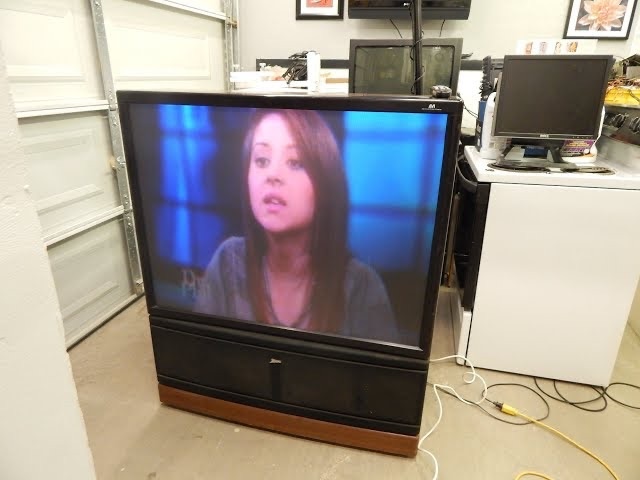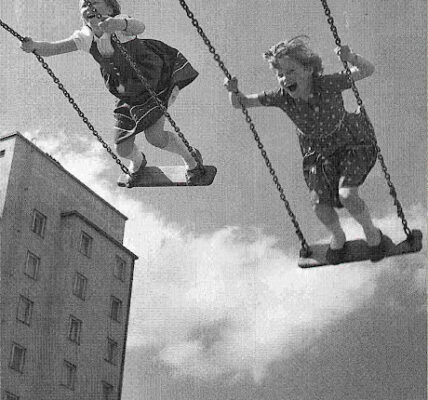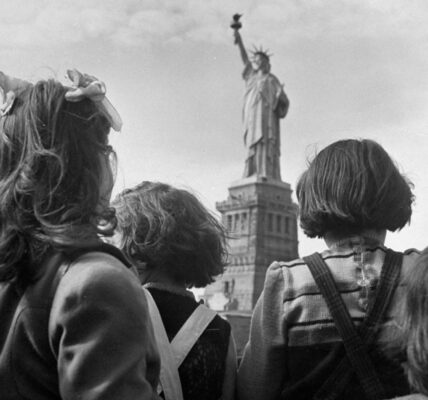Can You Name This Legendary Living Room Must-Have? If You Can, You’ve Unlocked Peak Nostalgia—Find Out What Made It So Unforgettable! – 206-s1
There was a time when the centerpiece of every family living room wasn’t a sleek, wafer-thin OLED or LCD TV but the massive rear-projection television (RPTV). These behemoth devices, with their towering screens and commanding presence, were the ultimate status symbol in the late 20th century. Families would gather around them for movie nights, sporting events, and weekend cartoons. Today, as these giants have largely faded into history, they remind us of an era when home entertainment was just beginning to revolutionize our lives.
The Rise of the Rear-Projection Television (RPTV)
The 1980s and 1990s were the golden years of the rear-projection television (RPTV). While CRT (cathode ray tube) televisions were still the norm for most households, RPTVs offered something that CRTs couldn’t: size. Their screens often ranged from 50 inches to 70 inches, which was considered enormous for the time. This size made them perfect for families who wanted a home theater experience without breaking the bank compared to more advanced (and prohibitively expensive) alternatives.

Unlike traditional CRT TVs, which displayed images directly on the screen, RPTVs worked by projecting images onto the screen from inside the unit. This was achieved through a combination of three projectors—red, green, and blue—working together to create a full-color image. While their brightness and clarity were sometimes lacking compared to modern flat screens, for their time, they represented cutting-edge technology.
The Social Hub of the Living Room
For families, owning a rear-projection television (RPTV) was more than just about having a big screen. It was about bringing people together. Saturday nights were often spent watching blockbuster movies with friends, and Sunday afternoons meant football games with the neighbors. For children, it was about waking up early on Saturdays to watch cartoons on a screen that seemed larger than life.
These TVs weren’t just about entertainment—they were a source of pride. Having one in your home meant you were on the cutting edge of technology, even if it did require half the living room space to accommodate it. And, of course, there was that sense of ritual involved in watching something on the “big screen,” especially for major events like the Super Bowl or the Oscars.
The Downsides: Bulky Yet Beloved
Despite their popularity, rear-projection televisions (RPTVs) were not without their flaws. First, there was their sheer size. These units were notoriously heavy and cumbersome, making moving them a near-impossible task without the help of multiple people. And if you’ve ever tried rearranging a living room with an RPTV, you’ll know the struggle.
Second, the image quality was often dependent on the viewing angle and ambient light. Watching an RPTV in a brightly lit room could lead to washed-out colors, and sitting too far to the side would result in a distorted image. Yet, for all these quirks, families loved them. They were willing to accept these flaws because the idea of having a theater-like experience at home was just too appealing.

A Revolutionary Technology of Its Time
What made the rear-projection television (RPTV) so fascinating was the technology behind it. Unlike today’s TVs that rely on LED or OLED panels, RPTVs used an internal light engine, mirrors, and lenses to project images onto the screen. The three-color projectors—red, green, and blue—would work in harmony to produce the images, and a mirror inside the TV would reflect the light onto the screen.
In the early 2000s, manufacturers began experimenting with better versions of this technology, such as DLP (Digital Light Processing) and LCD projection, which improved image quality and reduced the bulk of the units. However, these advancements came too late, as flat-panel TVs began to take over the market.
The Fall of the RPTV
The decline of the rear-projection television (RPTV) began with the introduction of plasma and LCD flat screens. These new TVs offered sharper images, better brightness, and a sleek design that didn’t dominate the room. By the mid-2000s, RPTVs were rapidly becoming obsolete. They were considered relics of a bygone era, with many being donated, scrapped, or left to collect dust in basements and garages.
However, for those who grew up with an RPTV, the memories remain vivid. It wasn’t just a television—it was a part of the family. The RPTV was there for late-night marathons, big game celebrations, and lazy Sundays flipping through channels. It wasn’t just a piece of furniture; it was a window into a world of entertainment.

Fun Facts About Rear-Projection Televisions (RPTVs)
- Pioneering Tech: The concept of projection TVs dates back to the 1940s, but it wasn’t until the 1980s that they became commercially viable for home use.
- The Status Symbol: In the 1990s, owning a large-screen RPTV was a mark of prestige. It was often the centerpiece of family living rooms.
- Movie Nights Galore: Many families used RPTVs for VHS and DVD movie marathons, which made them feel like they had their own personal cinema.
- Maintenance Challenges: RPTVs required regular maintenance, including cleaning the mirrors and replacing the internal light bulbs, which were expensive at the time.
- A Cinema-Like Experience: Despite their flaws, RPTVs paved the way for today’s high-definition TVs and projectors, making the home theater experience more accessible.
The Legacy of the Rear-Projection Television (RPTV)
Though they have long been surpassed by modern technology, rear-projection televisions (RPTVs) hold a special place in the hearts of those who experienced them. They remind us of a simpler time when families gathered together to watch their favorite shows and movies, and the sheer size of the TV screen felt like a marvel of engineering.
In many ways, the RPTV represents the bridge between the old and the new—the era of small CRTs and today’s ultra-thin smart TVs. It was a time when entertainment was as much about the shared experience as it was about the content itself.
So, the next time you see one of these massive relics, take a moment to appreciate the role it played in shaping home entertainment as we know it today. It wasn’t just a TV; it was a portal to countless cherished memories.

Conclusion
The rear-projection television (RPTV) was more than just a technological innovation; it was a cultural phenomenon. It brought families together, turned living rooms into theaters, and gave us some of the most unforgettable moments of our lives. While they may now be a thing of the past, their impact on home entertainment will never be forgotten.



